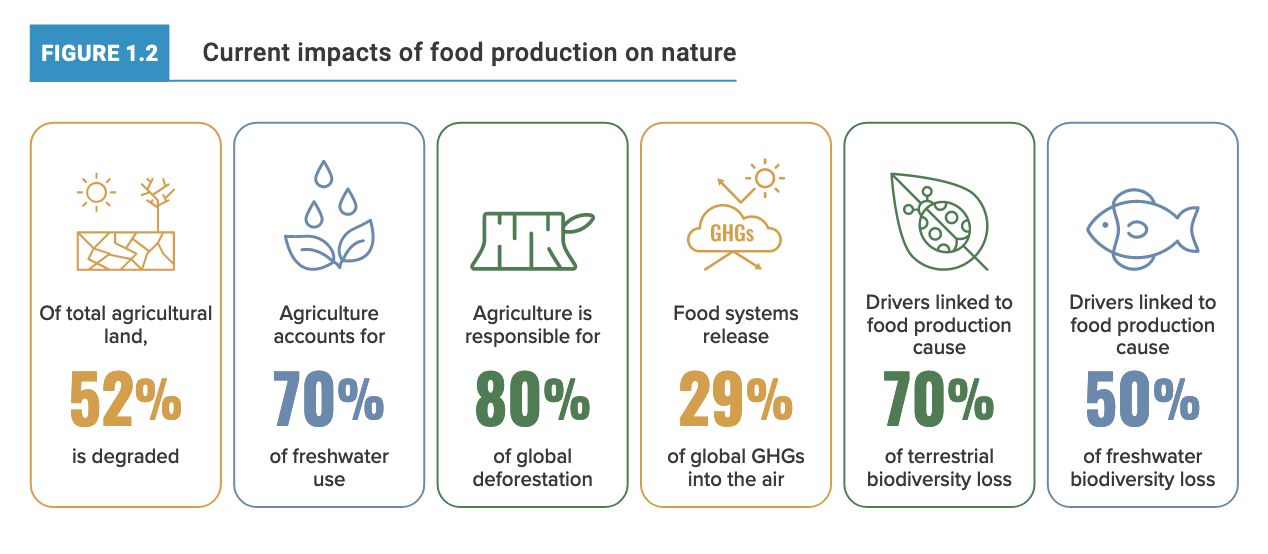Resistance is NOT Futile
A newsletter about food systems, climate change and everything connected to them
It’s deadline time at Casa Thin so this is going to be a short one. Next week, I hope to share the fruits of a big investigation I’ve been involved in.
Resistance, Anyone?
Are you a farmer who has been using green agricultural techniques to grow your crops/livestock? Or do you want to shift to such methods but are stymied by a myriad of barriers that lock you into input-intensive, environmentally-destructive farming?
What challenges are you facing? What kind of help do you need but are not receiving? Do you feel represented in the halls of Brussels?
Or perhaps you know farmers who are doing some very cool things - or want to do some very cool things - to flip the way food is being produced. Who are they? What is it about them and their work that excites and inspires you?
Lighthouse Reports’ Food Systems Newsroom - of which I am a member - is looking to speak to farmers, farming organisations and farm workers across Europe who are charting their own path and resisting “Big Ag” - big corporations that control so many aspects of our food and agriculture, from seeds, pesticides and fertilisers to grain trading, meat processing and retail.
We want to hear about your hopes, fears, struggles and plans for the future. We want to know what you’re doing. We want to see how you’re organising. Leave a comment under this newsletter or drop me a line at thin@thin-ink.net.
Our lands are in trouble
If you have any doubts that the way we are currently producing, processing, transporting, consuming and discarding food is harmful not just to nature but to ourselves as well, look no further than the image below, taken from the Global Land Outlook 2, the second edition of the state of the world’s land resources published by The United Nations Convention to Combat Desertification (UNCCD).
“Modern agriculture has altered the face of the planet more than any other human activity. We need to urgently rethink our global food systems, which are responsible for 80% of deforestation, 70% of freshwater use, and the single greatest cause of terrestrial biodiversity loss.”
Ibrahim Thiaw, Executive Secretary of the UNCCD
A few takeaways
Up to 40 % of the planet’s land is degraded.
This directly affects half of humanity and threatens roughly half of global GDP (US$44 trillion).
Nations’ current pledge to restore 1 billion degraded hectares by 2030 requires US$1.6 trillion this decade.
That is a lot of zeros. But to put this in context, globally, we spend $700 billion every single year in fossil fuel and agricultural subsidies.
If business as usual continued through 2050, additional degradation would be as big as the whole continent of South America. There will be a persistent, long-term decline in vegetative productivity in 12-14% of agricultural, pasture and grazing land. Worst affected will be sub-Saharan Africa.
If we restore around 5 billion hectares (50 million square km or 35% of global land area) using measures such as agroforestry and grazing management, crop yields will increase by 5-10% in most developing countries compared to the baseline. Biodiversity continues to decline, but not as quickly, with 11% of biodiversity loss averted.
But this is five times the amount of land that has been pledged for restoration currently.
If we do both restoration and protection, meaning the above measures + protecting areas important for biodiversity, water regulation, conserving soil and carbon stocks, etc = additional 4 mln square km of natural areas (India + Pakistan) and about a third of the biodiversity loss projected in “business as usual” would be prevented.
But all is not lost. The report said many regenerative agriculture practices have the potential to increase crop yields and improve their nutritional quality and at the same time reduce greenhouse gas emissions and draw down carbon from the atmosphere.
Examples include rewilding in the Greater Côa Valley in northern Portugal and the Iberá wetlands in Argentina; drought preparedness and risk reduction through national programmes in Mexico, the USA, and Brazil; sand and dust storm source mitigation in Iraq, China, and Kuwait; and gender-responsive land restoration in Mali, Nicauragua, and Jordan.
The great Oreo mystery solved
Have you ever wondered why, when you twist open an Oreo cookie, no matter how hard you tried, most of the cream seems to stick to one side and not the other? Wonder no more!
The engineers at MIT have come up with an answer. I don’t want to give away the reveal because the study is such a delightful thing to read - and don’t we need some delight right now? - that I’ll just direct you to the original article.
Essentially, the scientists used rheology — “the study of how a non-Newtonian material flows when twisted, pressed, or otherwise stressed” to get their answer and explained why they used this method.
“While rheology cannot address questions like whether beans belong in chili, or whether a spoon or fork is the more appropriate utensil for mac ‘n’ cheese, it can describe why larger grains of cereal or larger nuts rise to the top of mixtures when shaken (by granular convection), quantify useful food descriptors like “creamy,” “mushy,” “slippery,” “rubbery,” and “astringent,” and pinpoint ingredients and length scales that imbue these textures.”
“Fluid mechanics beyond rheology has also been applied to understand and improve food science, including revealing better methods to dip biscuits into morning tea (horizontally, not vertically) by understanding liquid flow through porous carbohydrate media, showing why microwaving tea is less effective than heating a teapot from below (due to fluid convection), clarifying what causes cold milk droplets to bounce across the surface of hot tea or coffee, and solving how you can carry your nearly-full coffee cup without spilling (i.e., by walking backward).”
They also devised a device - “an open-source, three-dimensionally printed Oreometer powered by rubber bands and coins for encouraging higher precision home studies to contribute new discoveries to this incipient field of study” - which you can recreate using a 3D printer. Instructions here.
The press release itself is a fun read and you can also watch their experiment below.
As always, have a great weekend! Please feel free to share this post and send tips and thoughts on twitter @thinink, to my LinkedIn page or via e-mail thin@thin-ink.net.





